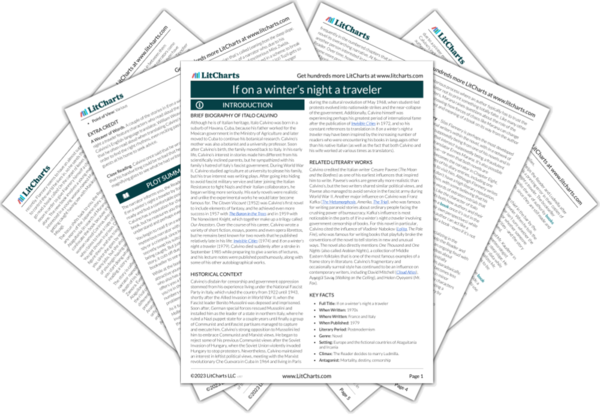The trains that appear in this novel, most prominently in the titular If on a winter’s night a traveler, symbolize how reading is a journey that can transport readers to new and unexpected places. In particular, the train symbolism portrays reading as a linear, guided experience—at least on the surface. The titular story focuses on a nameless narrator who has somehow arrived at a remote train station but seems reluctant to reveal anything about his identity, why he came to the train station, or what he did before arriving at the station. The narrator constantly points out how the world around him is an illusion and how you, the Reader, can only see something if the author specifically points out to you. These details all call attention to how a reader, like a train, is on a guided set of tracks laid by the author and has no option but to move forward, observing the lives of characters who also move on defined tracks.
Still, as the rest of the novel makes clear, just because reading is a linear experience doesn’t mean a story must be a straightforward journey from beginning to end. The train in the first story might give a sense of continuity and forward momentum, but the abrupt ending of that first story confirms that the novel as a whole will not be a linear train ride. Later in the novel, the Reader is on a train and thinks he glimpses Ludmilla in a train going the opposite way, only to wake up and realize that the whole experience was a dream. Shortly after, the Reader marries Ludmilla, contradicting the dream of the opposite trains and suggesting that, as much as trains seem like powerful forces moving in a single direction, sometimes the notion of a linear journey is little more than an illusion.
Trains Quotes in If on a winter’s night a traveler
The novel begins in a railway station, a locomotive huffs, steam from a piston covers the opening of the chapter, a cloud of smoke hides part of the first paragraph.










